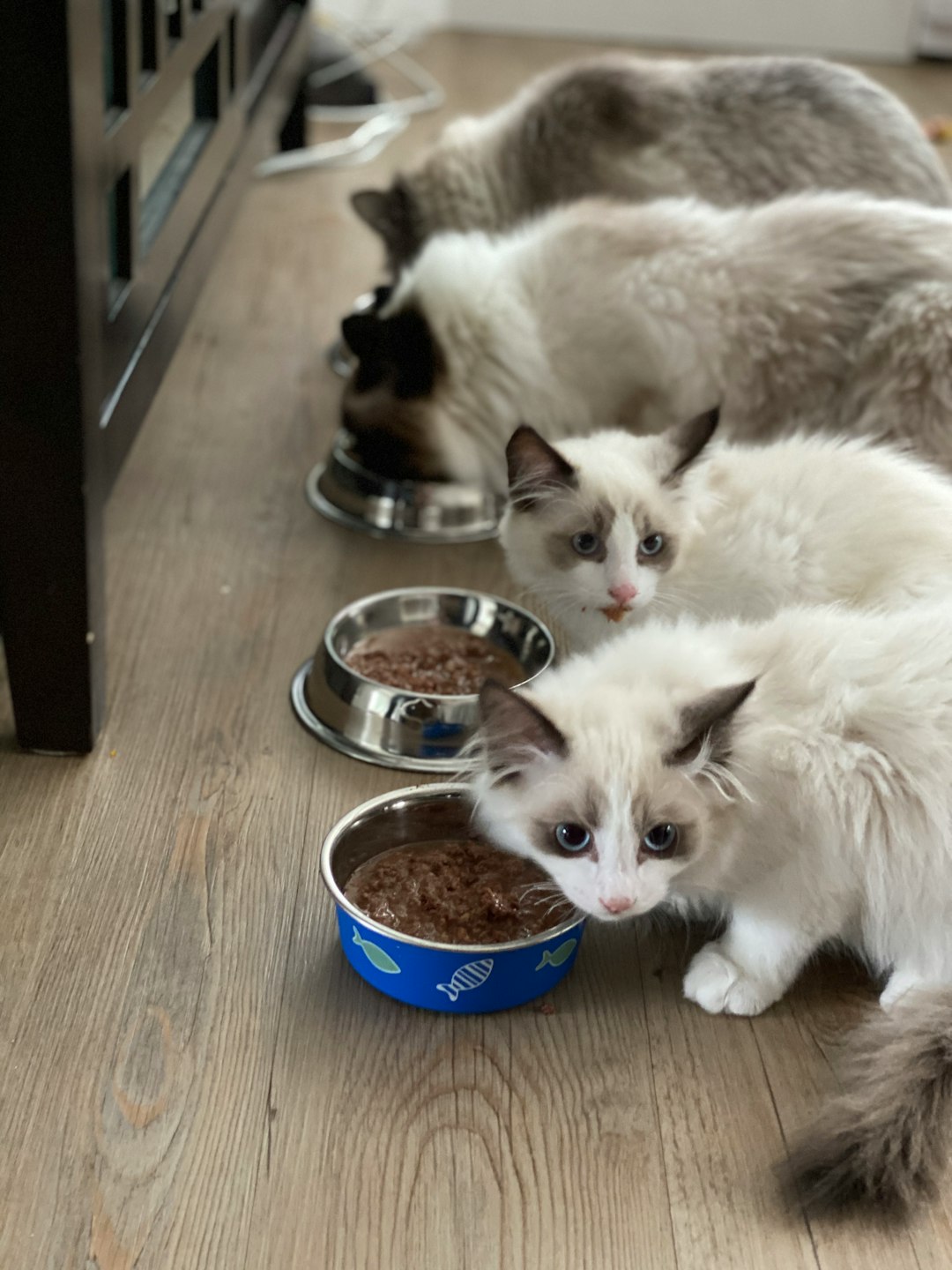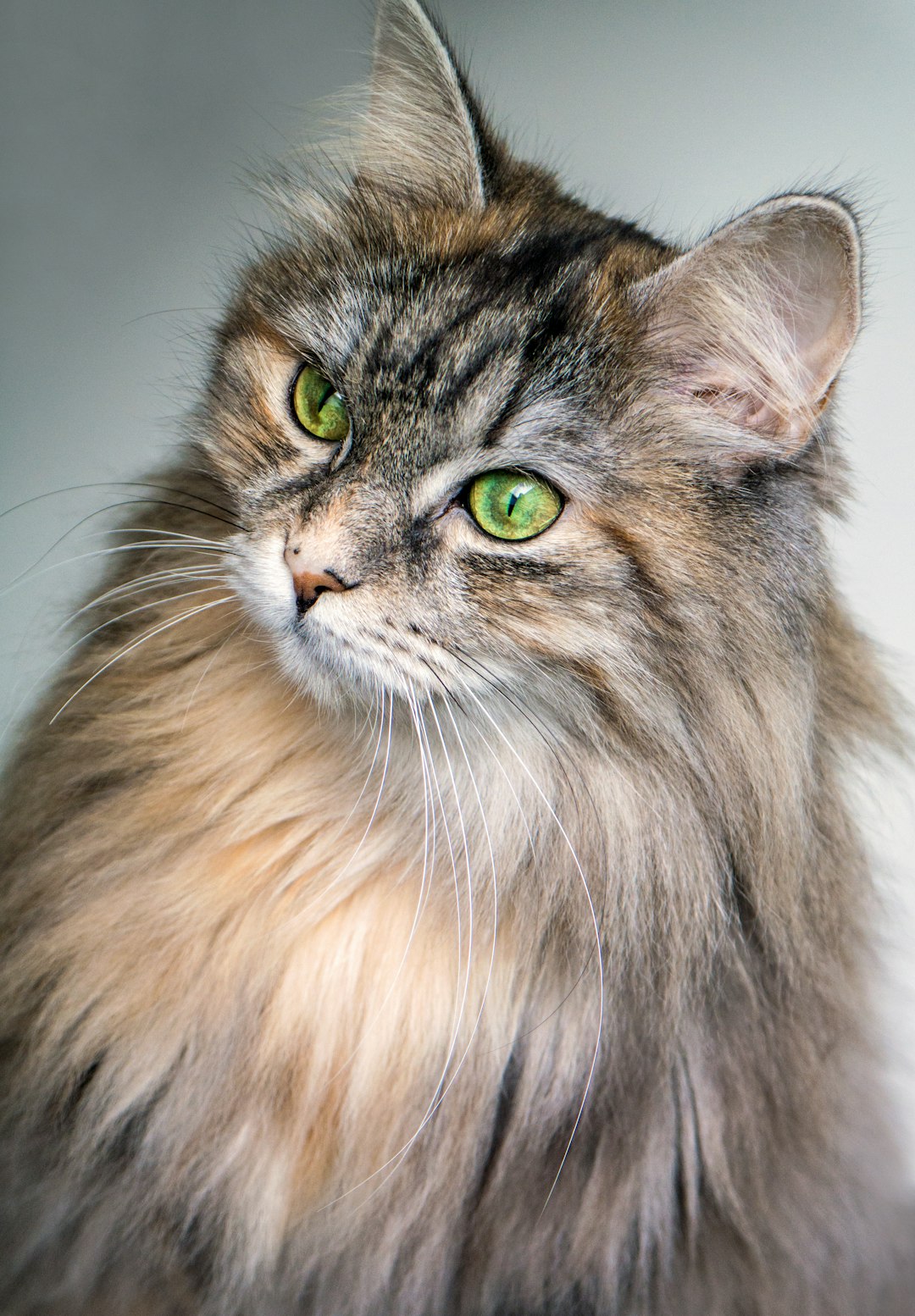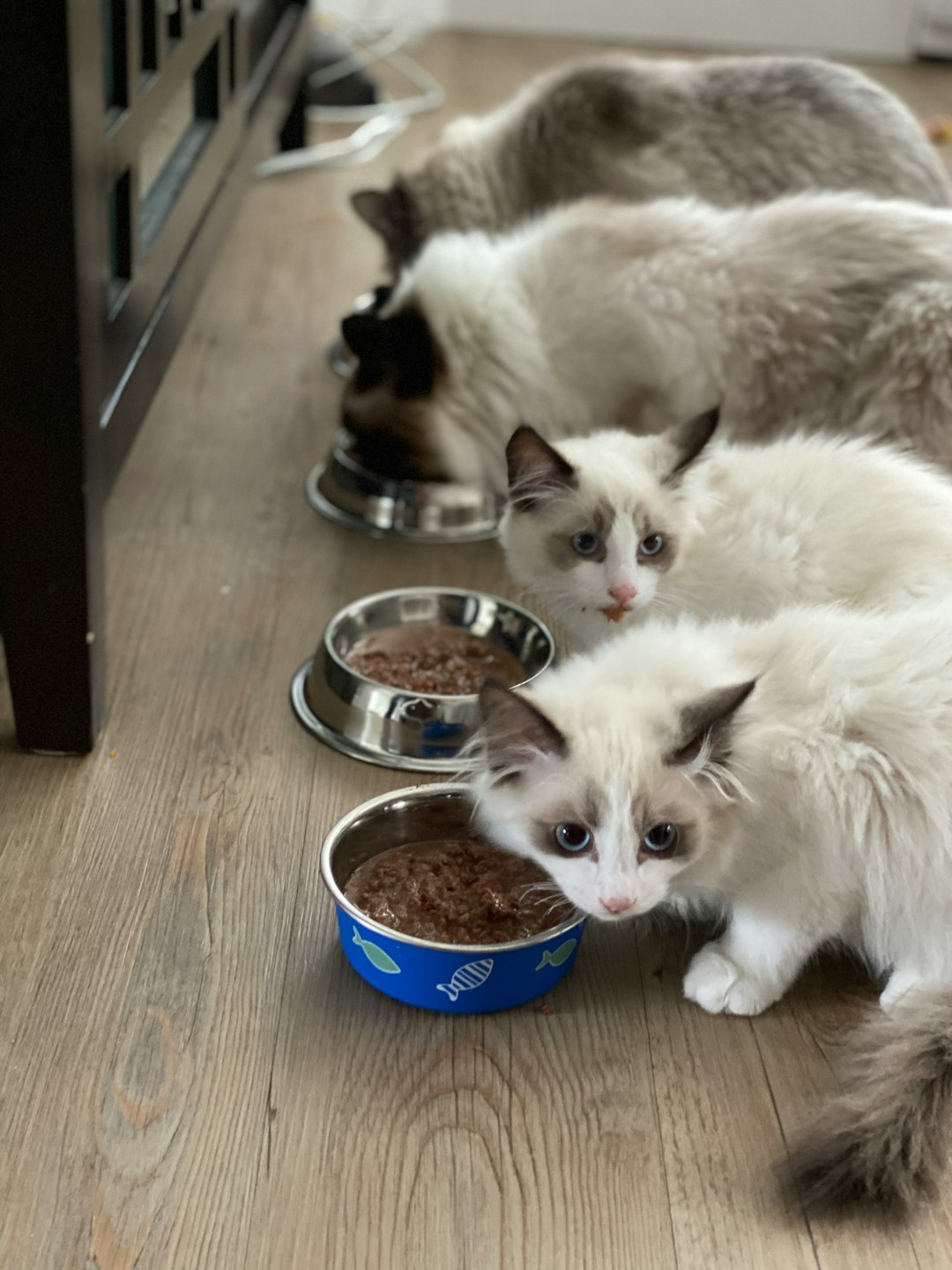Grooming your feline friend is an essential part of maintaining their overall health and happiness. While cats are known for their self-grooming habits, there are times when they need a little extra help, especially when it comes to keeping their fur clean and well-maintained. This is where choosing the right Cat Shampoo becomes crucial. Using a product specifically formulated for cats can make a significant difference in their grooming routine. In this guide, we will explore the importance of cat grooming, the types of cat shampoos available, and key ingredients to consider. By the end, you’ll be well-equipped to find the best shampoo for your furry companion and understand how to use it effectively for a stress-free bathing experience.
Understanding the Importance of Cat Grooming
Grooming plays a vital role in maintaining the overall health and well-being of cats. Regular grooming not only keeps a cat’s fur clean and free of tangles but also allows pet owners to monitor their feline friend’s physical condition closely. As neglected grooming can lead to a host of issues, understanding the significance of this practice is essential for every cat owner.
Benefits of Regular Grooming
| Benefit | Description |
|---|---|
| Reduced Shedding | Regular grooming helps control shedding, minimizing fur on furniture and floors. |
| Mat and Tangle Prevention | Frequent grooming keeps fur manageable, preventing painful mats from forming. |
| Skin Health | Grooming stimulates blood flow and allows for early detection of skin issues. |
| Bonding Time | Grooming fosters a deeper bond between the owner and the cat, enhancing trust. |
How Grooming Affects Your Cat’s Health
Maintaining a regular grooming routine positively impacts a cat’s overall health:
- Parasite Monitoring: Routine grooming allows owners to check for fleas, ticks, or other parasites, which can affect a cat’s health.
- Mat Removal: By removing mats and tangles, potential skin irritations or infections can be avoided, promoting healthier skin.
- Nutritional Insights: While grooming, changes in coat texture or appearance may indicate nutritional deficiencies, prompting a visit to the veterinarian.
Incorporating regular grooming into a cat’s care routine is not just about aesthetics—it is crucial for nurturing their physical and psychological well-being.
Why Use Cat-Specific Shampoo?
Using cat-specific shampoo is crucial for maintaining a healthy coat and skin for felines. Unlike humans or even other pets, cats have unique grooming needs due to their sensitive skin and distinct coat types. Here’s why investing in specialized products is essential for your furry companion.
Differences Between Cat and Dog Shampoo
It’s important to recognize that cat shampoo and dog shampoo differ significantly in formulation. The key distinctions include:
| Feature | Cat Shampoo | Dog Shampoo |
|---|---|---|
| pH Level | Around 6.0-6.5 (more acidic) | Around 7.0-8.0 (more alkaline) |
| Fragrance | Lightly scented (if at all) | Often contains stronger fragrances |
| Ingredients | Gentle, cat-safe components | May contain harsher chemicals |
| Allergens | Usually hypoallergenic | May not be suitable for sensitive pets |
Skin Sensitivity in Cats
Cats have more delicate skin compared to other animals; thus, they can react poorly to products not crafted specifically for them. Cat-specific shampoos often contain moisturizers, like aloe vera or oatmeal, to soothe dry skin and prevent irritation. Using inappropriate alternatives can lead to dermatological issues, including:
- Allergies: Skin reactions to allergens may arise.
- Dryness: Non-cat formulas can strip natural oils from their coat.
- Infections: Harmful ingredients may disrupt the skin barrier, increasing susceptibility to infections.
In summary, choosing the right shampoo ensures your cat’s unique grooming needs are met, keeping their coat luscious and their skin healthy. This consideration ultimately contributes to your pet’s overall well-being and happiness.
Types of Cat Shampoos Available
Cats have unique grooming needs, and understanding the different types of shampoos available can help owners choose the right product. Here’s a closer look at two popular categories: waterless shampoos and medicated shampoos.
Waterless Shampoos
Waterless shampoos provide a convenient option for cat owners who may struggle with bathing their furry friends. These shampoos often come in foam or spray form, allowing for easy application without rinsing. Here are some benefits:
| Advantages | Considerations |
|---|---|
| Quick and easy application | May not thoroughly clean heavy dirt |
| Ideal for cats who dislike water | Not suitable for deep cleansing |
| Refreshes fur and removes odor | Requires follow-up brushing |
Waterless shampoos can be a great choice for quick touch-ups or maintaining freshness between regular baths.
Medicated Shampoos
Medicated shampoos are specifically formulated to address various skin conditions such as allergies, infections, or parasites. Common ingredients like antifungal agents or antibacterial compounds can provide therapeutic benefits. Check out the table below for common uses:
| Condition | Active Ingredient | Purpose |
|---|---|---|
| Fungal infections | Miconazole | Treats ringworm and other fungal issues |
| Bacterial infections | Chlorhexidine | Reduces bacteria and promotes healing |
| Flea or tick infestations | Pyrethrin | Eliminates parasites effectively |
Using medicated shampoos typically requires a veterinarian’s recommendation to ensure the most effective and safe treatment for your cat’s specific needs.
By understanding the available types of cat shampoos, pet owners can make informed decisions that cater to their feline friends’ grooming requirements.
Ingredients to Look For in Cat Shampoo
Natural Ingredients
When selecting cat shampoo, it’s essential to opt for natural ingredients that are gentle on feline skin and fur. Look for shampoos that feature components such as:
| Ingredient | Benefits |
|---|---|
| Aloe Vera | Soothes and hydrates the skin |
| Oatmeal | Provides relief from itching and irritation |
| Coconut Oil | Moisturizes while promoting a shiny coat |
| Chamomile Extract | Calms and helps reduce inflammation |
Natural ingredients not only make shampoo safer but can also enhance the overall well-being of your cat’s coat. Products containing these elements ensure a nurturing wash without stripping away natural oils.
Avoiding Harmful Chemicals
While selecting a suitable shampoo, it’s crucial to avoid harmful chemicals that can potentially harm cats. Ingredients to be wary of include:
| Chemical | Potential Risks |
|---|---|
| Sulfates | Can cause skin irritation and dryness |
| Parabens | May disrupt hormonal balance |
| Artificial Fragrances | Can lead to allergic reactions |
| Dyes | Often linked to skin problems and sensitivities |
Choosing products free from these harmful substances helps maintain your cat’s health and protects their skin from adverse reactions. A cautious selection process will ensure you’re giving your feline friend the safest and most effective grooming experience possible.
Top Brands of Cat Shampoo
Review of Popular Brands
When it comes to selecting the best cat shampoos, several brands stand out due to their quality ingredients and effective formulas. Below is a table that highlights some popular options along with their key features:
| Brand Name | Key Features | Ideal For |
|---|---|---|
| PetPleasant | Natural ingredients, hypoallergenic, and soothing scents | Sensitive skin types |
| Earthbath | Eco-friendly, specifically formulated for cats with no artificial colors | Environmentally-conscious owners |
| Pawtitas | Contains organic ingredients, tear-free formula, and is biodegradable | Cats with allergies |
| Veterinary Formula | Effective against pests and dandruff, veterinary-approved | Cats with skin conditions |
| Burt’s Bees | Made with natural ingredients, cruelty-free, and pH balanced for cats | Owners who prefer natural products |
These brands have gained a loyal following among pet owners and veterinarians alike, thanks to their dedication to quality and safety.
Budget-Friendly Options
Not all great cat shampoos come at a high price. Here are some budget-friendly brands that offer excellent results without breaking the bank:
| Brand Name | Price Range | Highlights |
|---|---|---|
| Vet’s Best | $10 – $15 | Aloe vera and neem oil, soothing effect |
| TropiClean | $10 – $12 | Made with natural ingredients, free from harsh chemicals |
| Nature’s Miracle | $8 – $12 | Cleans and deodorizes, ideal for active cats |
| Hartz | $5 – $10 | Affordable, available in many pet stores |
Choosing a budget-friendly option doesn’t mean sacrificing quality, as these brands have consistently shown promising results in grooming. Each cat is unique, so finding the right shampoo might require a bit of trial and error to see what works best for your feline companion.
How to Bathe Your Cat with Shampoo
Step-by-Step Bathing Guide
Bathing a cat can be a daunting task, but following a structured approach can ease the process significantly. Here is a step-by-step guide:
- Gather Supplies: Before you start, ensure you have all necessary items such as cat shampoo, towels, a non-slip mat, and a gentle spray nozzle or cup.
- Prepare the Bath Area: Fill the bathtub or sink with a few inches of lukewarm water. The temperature should be comfortable, as cats are sensitive to extremes.
- Secure Your Cat: Gently place your cat in the water, holding them securely but not tightly. Use one hand to support their body, ensuring they feel safe.
- Wet the Fur: Use the spray nozzle or cup to wet your cat’s fur, avoiding the face and ears. This helps in reducing stress and keeps the shampoo where it’s needed.
- Apply Shampoo: Take a small amount of cat shampoo and gently massage it into your cat’s fur, starting from the neck and working your way down. Rinse thoroughly to avoid any residue.
- Dry Your Cat: Once rinsed, wrap your cat in a towel and gently pat them dry. If your cat tolerates it, you can use a low-heat pet dryer.
Tips for a Stress-Free Experience
To make the bathing experience more enjoyable for both you and your cat, consider these helpful tips:
- Choose the Right Time: Opt for a time when your cat is relaxed and in a calm mood, ideally after a meal or play session.
- Use Positive Reinforcement: Reward your cat with treats and soothing words throughout the bathing process. This helps create a positive association with bath time.
- Keep Sessions Short: Limit bathing time to essentials. This not only minimizes stress but also makes it easier to manage your cat’s patience.
- Avoid Force: If your cat resists, do not force the bath. You can gradually acclimate them to water using a damp cloth for cleaning—this can be effective for spot cleaning without a full bath.
Incorporating these tips can turn bathing into a more pleasant ritual rather than a battle, ensuring both you and your feline friend come out the other side happy and clean!
Common Mistakes to Avoid When Using Cat Shampoo
Using Human Shampoo
One of the most critical errors cat owners can make is using human shampoo on their felines. Human skin and cat skin differ significantly; using products formulated for humans can lead to skin irritation, allergies, or even more serious health concerns. Furthermore, human shampoos often contain ingredients that may not be safe for cats, such as fragrances and preservatives. It’s essential to choose a shampoo specifically designed for cats, as these products cater to their unique skin pH and sensitivities.
Over-Bathing Your Cat
Another common misconception is that frequent bathing is necessary for maintaining a cat’s cleanliness and hygiene. In reality, over-bathing can strip away the natural oils present on a cat’s skin, which are crucial for keeping their coat healthy and moisturized. Cats are generally good at grooming themselves, so bathing should only occur when required, such as during flea treatments or if they become particularly dirty.
| Mistake | Consequence | Solution |
|---|---|---|
| Using Human Shampoo | Skin irritation and allergic reactions | Opt for cat-specific shampoos |
| Over-Bathing | Loss of natural oils, potential skin issues | Bathe cats only when necessary |
By avoiding these common mistakes, you can ensure your feline friend’s grooming routine is effective and safe. Understanding proper care methods maximizes comfort and maintains your cat’s health.
How Often Should You Shampoo Your Cat?
When determining the frequency of using shampoo on a feline companion, various factors come into play. While there is no one-size-fits-all answer, understanding your cat’s grooming needs is essential.
Factors Affecting Bath Frequency
Several elements can influence how often to bathe a cat, including:
| Factor | Impact |
|---|---|
| Fur Type | Long-haired cats may need more frequent grooming than short-haired ones. |
| Lifestyle | Indoor cats may require less bathing than outdoor cats exposed to dirt. |
| Skin Conditions | Cats with specific skin issues might need regular baths with medicated shampoos, as advised by a veterinarian. |
| Allergies | Allergic reactions to environmental factors may necessitate more frequent washing. |
Signs Your Cat Needs a Bath
Recognizing when it’s time for a feline bath is crucial. Look for these signs:
- Greasy or Oily Fur: This indicates an excess buildup of oils on the skin.
- Unpleasant Odor: A foul smell is a clear signal that bath time is overdue.
- Visible Dirt or Debris: Cats that roam outside may gather dirt in their fur, requiring a wash.
- Itching or Scratching: If your cat is noticeably scratching more, an irritated coat may necessitate a cleaning.
By observing these factors and signs, pet owners can better decide how often to use shampoo and maintain their cat’s hygiene effectively.
Alternative Grooming Methods for Cats
Grooming extends beyond the use of cat shampoo. Several alternative methods can effectively maintain your cat’s coat health, minimize shedding, and contribute to their overall well-being.
Brushing and Combing
Brushing and combing are fundamental components of cat grooming. Regularly using the right brush can eliminate loose hair and reduce the risk of mats. Depending on your cat’s fur type, different brushes may be more effective:
| Fur Type | Recommended Brush | Frequency |
|---|---|---|
| Short-Haired | Bristle Brush | Weekly |
| Medium-Haired | Slicker Brush | Every few days |
| Long-Haired | Wide-Tooth Comb | Daily |
Brushing not only removes hair but also enhances circulation and distributes natural oils throughout the coat. Additionally, this allows you to check for skin issues, such as parasites or irritation.
Using Grooming Wipes
Grooming wipes provide a quick and hassle-free grooming option. These convenient wipes help to clean your cat’s paws, face, and coat without the need for full baths. When selecting grooming wipes, look for those that are safe for cats and hypoallergenic.
| Feature | Benefits |
|---|---|
| Pet-safe Formulas | Prevents allergic reactions |
| Deodorizing Effect | Keeps your cat smelling fresh |
| Convenience | Ideal for quick clean-ups |
Regular usage of grooming wipes can complement your grooming routine by keeping your cat clean in between baths, making them an excellent alternative for less frequent shampooing sessions. By incorporating these methods into your grooming routine, you can enhance your cat’s comfort and hygiene.
When to Consult a Veterinarian About Your Cat’s Grooming Needs
Signs of Skin Issues
Grooming is essential for a cat’s health, but certain signs indicate a need for veterinary intervention. If you notice any of the following, a consultation with a veterinarian is crucial:
| Symptoms | Potential Concerns |
|---|---|
| Excessive scratching | Allergies, skin infections |
| Red or inflamed skin | Dermatitis, bacterial infections |
| Hair loss | Parasites (fleas, mites), hormonal issues |
| Unpleasant odor | Skin infections, yeast overgrowth |
| Scabs or lesions | Infections, allergies |
Paying close attention to your cat’s skin health can prevent more severe issues.
When to Seek Professional Help
While regular grooming is usually managed at home, specific situations necessitate a veterinarian’s expertise. Consider seeking professional help if:
- Persistent Issues: If symptoms such as itching or hair loss persist despite regular grooming or using suitable products.
- Behavioral Changes: Uncharacteristic behavior, such as increased aggression or withdrawal, may indicate underlying discomfort or pain.
- Recent Changes: Shifts in grooming habits, sudden onset of skin issues, or drastic changes in your cat’s weight or demeanor warrant immediate evaluation.
- Allergic Reactions: If your cat experiences swelling or breathing difficulties post-bathing, it might be an allergy to a product used.
Identifying these critical signs and knowing when to consult a veterinarian can significantly enhance your cat’s overall well-being.
Frequently Asked Questions
What makes cat shampoo different from regular shampoo?
Cat shampoo is specifically formulated to meet the unique needs of feline skin and fur. Unlike human shampoos, which can contain sulfates and other harsh chemicals that can irritate a cat’s sensitive skin, cat shampoos are milder and often pH-balanced to suit their skin type. They also typically feature ingredients designed to moisturize and protect a cat’s coat from becoming dry or brittle, ensuring a softer and healthier appearance. Moreover, many cat shampoos contain natural ingredients, making them safer for cats who may lick their fur after bathing.
How often should I bathe my cat with shampoo?
The frequency of bathing your cat with shampoo largely depends on their lifestyle and grooming habits. Generally, cats are self-groomers and may not require regular bathing. However, if your cat has skin issues, allergies, or gets into something particularly messy, a bath may be warranted. In such cases, it’s advisable to bathe your cat every few weeks, but not more than once a month. Over-bathing can strip the natural oils of your cat’s coat, leading to dryness. Always consult with your veterinarian for personalized advice.
What ingredients should I look for in a cat shampoo?
When searching for a cat shampoo, it’s essential to select one containing gentle, natural ingredients. Look for shampoos that have oatmeal or aloe vera, which are excellent for soothing irritated skin. Avoid any products with artificial fragrances, sulfates, or parabens, as these can be harmful to your cat. Instead, opt for shampoos that are free of harmful chemicals and are specifically designed for cats. Additionally, some shampoos that contain insect-repelling ingredients can help fend off fleas, making them a great option for outdoor cats.
Can I use human shampoo on my cat in an emergency?
While you might be tempted to use human shampoo on your cat during an emergency, it’s generally not advisable. Human shampoos can disrupt the natural pH balance of a cat’s skin, leading to irritation, dryness, or allergic reactions. If you find yourself in a situation where you need to clean your cat and have no cat shampoo available, try to use a less harsh, pH-balanced alternative like baby shampoo in a pinch. However, this should never replace regular cat-specific shampoos, and you should aim to obtain appropriate shampoo as soon as possible.
Are there any cat shampoos that are safe for kittens?
Yes, there are cat shampoos specifically formulated for kittens that prioritize their delicate skin and coat requirements. These shampoos are usually free from harsh chemicals and are designed to be extra gentle, ensuring the safety of young cats. Always read the product label to confirm that it is suitable for kittens, as some cat shampoos are meant only for adult cats due to differing skin sensitivities. Consult with your veterinarian if you’re unsure about which product is best for your kitten.



